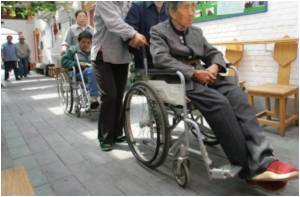Pakinson's patients needing rehabilitation may benefit from walking to a beat, suggests a study.

Together with a team of collaborators from abroad, Ervin Sejdic, an assistant professor of engineering in Pitt's Swanson School of Engineering, studied the effects of various metronomic stimuli (a mechanically produced beat) on fifteen healthy adults, ages 18 to 30.
Walkers participated in two sessions consisting of five 15-minute trials in which the participants walked with different cues.
In the first, participants walked at their preferred walking speed. Then, in subsequent trials, participants were asked to walk to a metronomic beat, produced by way of visuals, sound, or touch. Finally, participants were asked to walk with all three cues simultaneously, the pace of which was set to that of the first trial.
"We found that the auditory cue had the greatest influence on human gait, while the visual cues had no significant effect whatsoever. This finding could be particularly helpful for patients with Parkinson's Disease, for example, as auditory cues work very well in their rehabilitation," said Sejdic.
Sejdic said that with illnesses like Parkinson's Disease, a big question is whether researchers can better understand the changes that come with this deterioration. Through their study, the Pitt team feels that visual cues could be considered as an alternative modality in rehabilitation and should be further explored in the laboratory.
Advertisement
"But then, the person leaves and falls down. Why? Because a laboratory is a strictly controlled environment. It's flat, has few obstacles, and there aren't any cues (like sound) around us. When we're walking around our neighborhoods, however, there are sidewalks, as well as streetlights and people honking car horns: you have to process all of this information together. We are trying to create that real-life space in the laboratory," the researcher said.
Advertisement
Additionally, his team plans to explore the impact of music on runners and walkers.
The findings were published in the August issue of PLOS One.
Source-ANI















